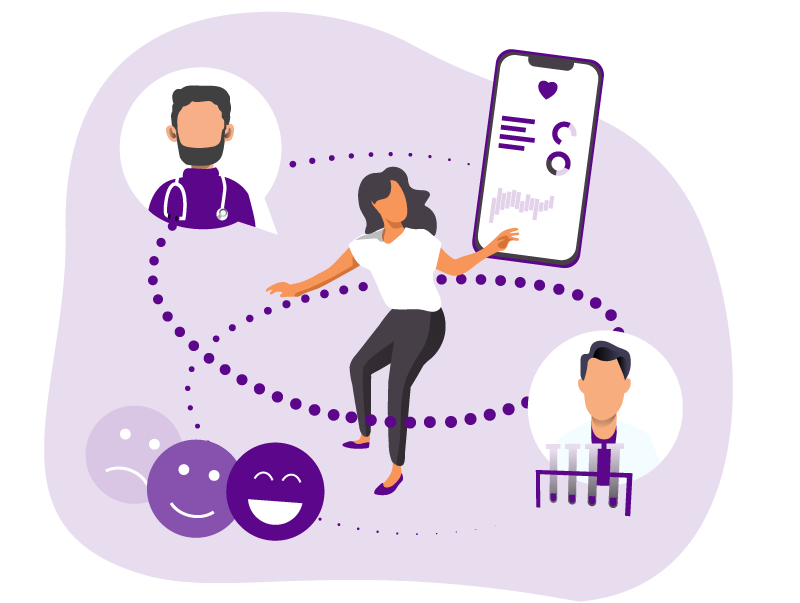Introduction
Experience Management has been a vital point in service industries, as it significantly impacts customer satisfaction and retention and is therefore essential in ensuring business success. The healthcare sector has fallen behind in this regard, as optimizing the patient’s interaction with the healthcare system has taken a back seat to ensure the latter’s more essential functions. However, over the past years, the importance of catering to the needs and expectations of patients has been made evident. The pandemic and the ensuing higher degree of digitalization, along with progress made in other industries, have accelerated this process and raised patient requirements. In an analysis conducted by the Harvard Business Review, Dr. Geeta Nayyar stresses the need for healthcare services to adapt to the elevated expectations of their “customers” and describes an improved healthcare system that is personalized, decentralized, empowered, and value-based. You can read more about the desired characteristics of such systems here.
medicalvalues understands the importance of user satisfaction and lays weight on enabling hospitals and institutions to provide a positive patient experience. The company’s goal of ensuring positive patient interactions with the healthcare system is further motivated by the relevant experience of the firm’s founders in this field, having worked on B2B e-commerce portals or marketing software. In the following, we will dive into experience management in the healthcare sector and identify vital trends and factors that need to be considered to ensure a smoother transition towards more patient-friendly systems.
Current trends
Although the healthcare industry is a unique field and exhibits numerous particularities compared to other sectors, specific trends can be identified, which have previously been observed in other areas.
In this section, these trends and the similarities of e-health to previous developments in other industries will be identified.
1. B2B and B2C blending and end-user involvement
Until now, a clear distinction could be made between broadly available symptom checkers and specialized software intended for professional use (such as CDSS – Clinical Decision Support Systems). However, recent advances in the implemented technologies and systems have blurred the line between these two. These services remain separate, but the patient journey becomes more fluent and integrated. For example, users may enter their symptoms in an online platform or portal and receive suggestions for definitive initial tests. The physician can then interpret and evaluate these tests to provide feedback and recommendations to the patient.
Additionally, the emergence of prescribable patient-centric applications (DiGAs – Digitale Gesundheitsanwendungen) in Germany further indicates the reduced gap between professional-grade and widely available consumer-oriented software. DiGAs are becoming a vital part of the patient journey, as they assist them during the detection, monitoring, treatment, and relief of the respective illness, injury, or disability.
The partial blending of B2B and B2C applications also impacts healthcare professionals, as they currently use numerous services and applications outside their work life. They are no longer willing to accept “clunky” and outdated interfaces when interacting with joyful and well-designed User Interfaces (UIs) in their private life.
2. Online and offline experience
The discussion around telehealth shares core similarities to previous debates and considerations on the rise of e-commerce. As was the case with the latter, the future of the healthcare system is expected to comprise a blend of online and offline experiences. In contrast to e-commerce, a substantial part of the procedures associated with patient treatment require the patient’s physical presence. Therefore, the share of offline experiences is expected to be larger than that of their digital counterparts. However, even when the required physical interactions in the healthcare sector are taken into account, the tasks surrounding and supporting these interactions are – to a great extent – executed digitally. In the example of a surgical procedure, the core task is performed physically, but the subsequent patient monitoring is partially achieved online through the use of ePROMs. ePROMs (electronic Patient-Reported Outcome Measures) enable healthcare professionals to better assess the patient’s health status at a particular point in time. They are often employed at different parts of the patient journey (pre- and post-event PROMs) to assess the impact of an intervention.
A further point that needs to be considered to combine online and offline services in the healthcare industry effectively is the flow and availability of information, as it can significantly impact patient care and experience. For example, patient data entered online should also be available at the point of care.
3. Customer Service as a critical differentiator
Another significant trend in digital health concerns the increased focus on remote or physical customer – or, in this case, patient – service. Significant advances will need to be made in the flow of information and the personalization of the support experience. Nowadays, patients researching their symptoms online is often regarded as harmful and superfluous engagement. However, it should instead be treated as a first step along the patient journey, and a data flow from self-service systems to professional support should be established and optimized. This rings true not only for patient-physician-interactions but also for the communication between physicians and other experts, such as laboratories, from which they require and expect timely responses and highly specialized information. Nowadays, laboratory physicians are often reduced to service providers, and their input in the diagnostic process is limited. A more engaged and active role of the specialists in the diagnostic process could help leverage their knowledge for the benefit of the patients. Even in this professional setting, the support received by the physicians can range from simple FAQ pages and video information (e.g., concerning pre-analytical tips) to more advanced facilitated expert cells (e.g., via Microsoft Teams).
Things to consider
Moving forward with changes and upgrades to the status quo of medical services, essential characteristics and particularities regarding the current service landscape and the nature of patient treatment need to be addressed. These aspects are crucial for successfully navigating the requirements and expectations in the healthcare service industry and ensuring optimal results for workers, patients, and institutions.
1. Medical perfection and patient outcomes must be prioritized
Undeniably, issues like branding and marketing, which play a central role in other industries, are now becoming increasingly important in the healthcare sector. Still, the most critical aspect that needs to be considered when implementing changes and updates in this field is the quality and effectiveness of patient care. The patient’s trust in the healthcare system is essential in this regard. This fact also highlights the physician’s unique role in the treatment process, as they are the core patient contact, and the relationship between the two influences patient outcomes. For this reason, empowering and enabling the physician to efficiently communicate with and effectively care for the patient should be a key objective of service design in the field of e-health.
2. Dealing with complexity is often more important than scale
A high patient and treatment capacity has often been a priority with hospitals and research centers, leading to the creation and operation of very large complexes. The pandemic accelerated the expansion of the healthcare IT sector, which in many cases had to be significantly scaled up to meet the elevated technical requirements. However, patient needs are typically considerably lower, and the occasional variations in the patient numbers (e.g., flu season) do not mirror the more extreme waves exhibited by the e-commerce industry (e.g., black Friday sales). Instead of focusing on scale, healthcare systems should, therefore, prioritize their capacity to deal with patient and case complexity, as this is, in most cases, a much more significant limitation in today’s care. One such example can be identified in the case of billing and payment systems. Hospitals do not need to handle thousands of credit card payments per minute (like one could observe in e-commerce systems), but there is a much greater need to deal with highly complex billing systems (e.g., public and private insurance).
3. Learn from other industries, but do not replicate existing mistakes
The similarities shared between the healthcare sector and industries that already went through the transition towards digital and online services can provide valuable insights into this process and are a chance for e-health to learn from existing systems without replicating their mistakes. Such mistakes include the use of monolithic applications and closed APIs to implement core functionalities and services. This code structure greatly limits the flexibility and expandability of the developed services and restricts connectivity and interoperability. The importance of interconnectivity in digitalized industries has been made evident, as multiple transactions between different e-commerce platforms are a common phenomenon in large companies. While many of the “Back-Office” systems exhibit these negative traits, this realization provides the opportunity to not repeat such errors in the “Front-Office” systems. A promising method of overcoming shortcomings inherent to digital systems and services is designing the implemented tools and platform to be modular. Modularization is also an effective tool to deal with increased complexity. More information on modular healthcare platforms will be available in a future article.
The role of medicalvalues
Although the importance of managing the patient experience has been made clear, identifying and implementing appropriate changes to the existing structure is often a matter of high complexity and uncertainty. medicalvalues can be a valuable ally in these efforts and support you on your journey toward patient-centric and effective services. Adopting such changes benefits the patients and can significantly impact the patient journey partners and stakeholders, including physicians, support personnel, laboratories, and sample senders. In the following, some key functionalities and offerings of the medicalvalues platform will be introduced, and their role in managing patient and partner experience will be explained.
1. Understanding patient needs
The medicalvalues platform can assist you in gathering and analyzing patient data relevant to the quality of their treatment. Doing so provides important insights into the needs of your patients and the direction in which changes should be implemented. Additionally, the platform can assist you in evaluating the patient journey and identifying pain points, as well as leveraging unexplored potential in the overall experience. The results are demonstrated on an intuitive interface, which enables easy and fast access to relevant information and offers physicians a broad overview of their patients’ health statuses. Through the insights and suggestions generated by the platform, you can create better patient-system interactions and provide patient-centric services that significantly improve the overall experience.
2. Automating and simplifying the diagnostic process
The built-in functions of the medicalvalues platform and the integrated interfaces can simplify and automate parts of the treatment and diagnostic process. For example, suggestions on what parameters should be examined according to the existing data and the possibility of ordering relevant tests directly can save valuable time and effort on the physician’s, as well as the patient’s, part. Through such integrations, the overall process becomes less complicated and daunting for the patient. At the same time, the increased understanding and control over their own data empowers them and strengthens their trust in the system. Additionally, the automation of manual tasks that would otherwise be conducted by healthcare professionals means that more of their time can be spent with the patients or on patient-centric tasks. This can positively impact the quality of care and improve the relations between the patient and the doctor.



